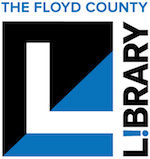
Disney’s adaptation of the Newbery-award winning A Wrinkle in Time hits theaters next month. Madeleine L’Engle’s mind-bending sci-fi tale has attracted many fans since its publication in 1962, as has its sequel, A Wind in the Door. But between the publication of these two books, L’Engle published The Arm of the Starfish, a sort-of sequel to A Wrinkle in Time featuring the grown-up Meg and Calvin and their children.
The book’s protagonist, however, is Adam Eddington – a young student traveling to a secluded scientific institute off the coast of Portugal for a summer job in which he’ll be working with the brilliant Dr. Calvin O’Keefe studying the regenerative nature of starfish and its application on the regrowth of human limbs. At the airport he meets a beautiful young woman who gives him this warning: under no circumstances is he to trust Dr. O’Keefe! When O’Keefe’s daughter, Poly, goes missing while under Adam’s care, he finds himself thrust in the middle of a conspiracy with no way of knowing whom he can trust. The thriller-genre atmosphere of Starfish is quite different than the bizarre sci-fi of the Wrinkle in Time books, and Starfish has two sequels of its own, all loosely centered around Poly O’Keefe.
Adam himself returns in L’Engle’s A Ring of Endless Light – the fourth book in her family drama series about the Austins – accompanied by Katherine Forrester, a character from her adult novel The Small Rain. L’Engle’s entire bibliography is, in fact, an interconnected universe with characters wandering in and out of each other’s books, but she has divided the books about her two central families into two categories corresponding to different conceptions of time. The Austin books take place in the world of Chronos, “ordinary, wrist-watch, alarm-clock time”, while A Wrinkle in Time and its sequels take place in the world of Kairos – pure, unmeasured time that we only experience in those rare transcendent moments in our lives when time loses its meaning. Moments like falling in love… or getting lost in a good book!
So check out one of Madeleine L’Engle’s books. Although generally marketed as YA, L’Engle’s novels, with their drama, intrigue, and weird science, will also appeal to older teens and adults. No matter what genre you like, there are several entry points into her vast literary universe.
The Time Quintet
A Wrinkle in Time (1962; 245 pages)
A Wind in the Door (1973; 224 pages)
The Swiftly Tilting Planet (1978; 278 pages)
Many Waters (1986; 357 pages)
An Acceptable Time (1989; 340 pages)
You may also like:
Inkheart by Cornelia Funke (2003; 534 pages)
When You Reach Me by Rebecca Stead (2009; 199 pages)
The Poly O’Keefe Trilogy
The Arm of the Starfish (1965; 240 pages)
Dragons in the Water (1976; 293 pages)
A House Like a Lotus (1984; 307 pages)
You may also like:
Island of Thieves by Josh Lacey (2012; 228 pages)
Theodosia and the Serpents of Chaos by R.L. LaFevers (2007; 344 pages)
The Austin Family Chronicles
Meet the Austins (1960; 230 pages)
The Moon by Night (1963; 280 pages)
The Young Unicorns (1968; 294 pages)
A Ring of Endless Light (1980; 340 pages)
Troubling a Star (1994; 324 pages)
You may also like:
Anne of Green Gables by L.M. Montgomery (1908; 440 pages)
The Headless Cupid by Zilpha Keatley Snyder (1971; 219 pages)
